Pelagornis

By Ripley Cook
Etymology: Sea Bird
First Described By: Lartet, 1857
Classification: Dinosauromorpha, Dinosauriformes, Dracohors, Dinosauria, Saurischia, Eusaurischia, Theropoda, Neotheropoda, Averostra, Tetanurae, Orionides, Avetheropoda, Coelurosauria, Tyrannoraptora, Maniraptoromorpha, Maniraptoriformes, Maniraptora, Pennaraptora, Paraves, Eumaniraptora, Averaptora, Avialae, Euavialae, Avebrevicauda, Pygostaylia, Ornithothoraces, Euornithes, Ornithuromorpha, Ornithurae, Neornithes, Neognathae, Pelagornithidae
Referred Species: P. chilensis, P. longirostris, P. mauretanicus, P. miocaenus, P. orri, P. sandersi, P. stirtoni, P. tenuirostris, P. wetmorei
Status: Extinct
Time and Place: Between 30 and 2.5 million years ago, from the Rupelian of the Oligocene through the beginning of the Pleistocene (in the Gelasian age)

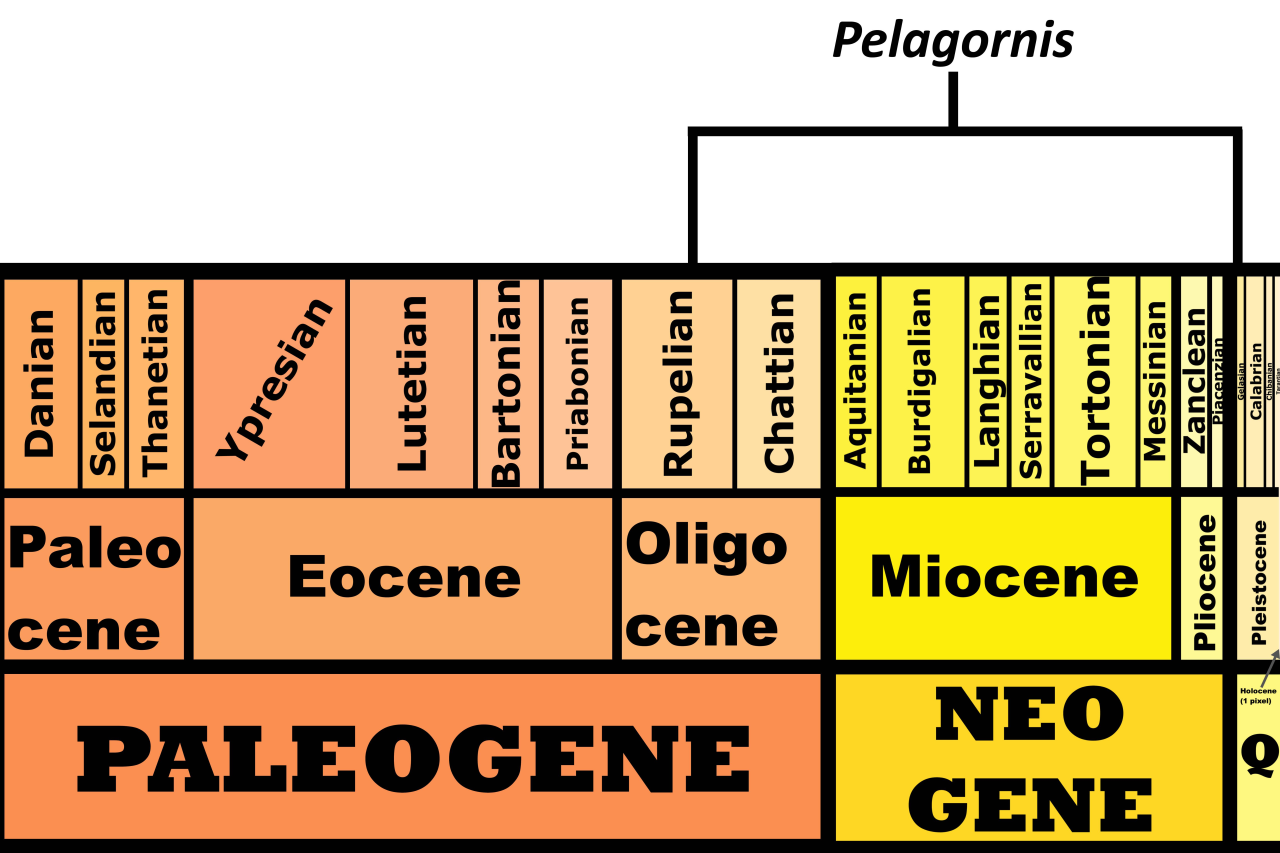
Pelagornis, being an extremely common seabird, is known from nearly everywhere around the world, usually associated with the coast.
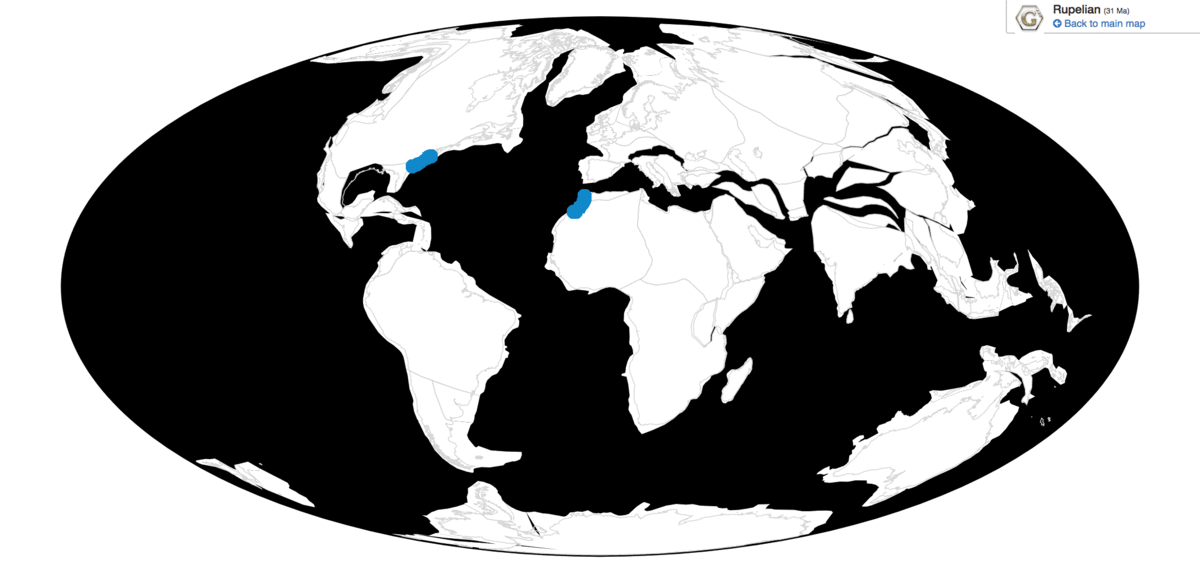
Physical Description: Despite the incredibly generic name, Pelagornis was quite an interesting bird. Like other pseudotooth birds, both its upper and lower beak bore toothlike spikes, in an alternating small/big/small/big pattern. Its beak was robust and fairly long compared to the back of the skull. These pseudoteeth appear to have grown in relatively late in Pelagornis’s growth, implying the keratin covering the beak may not have been fully hardened until close to adulthood. Interestingly enough, fossil evidence indicates that Pelagornis probably held its head upright at a vertical angle.
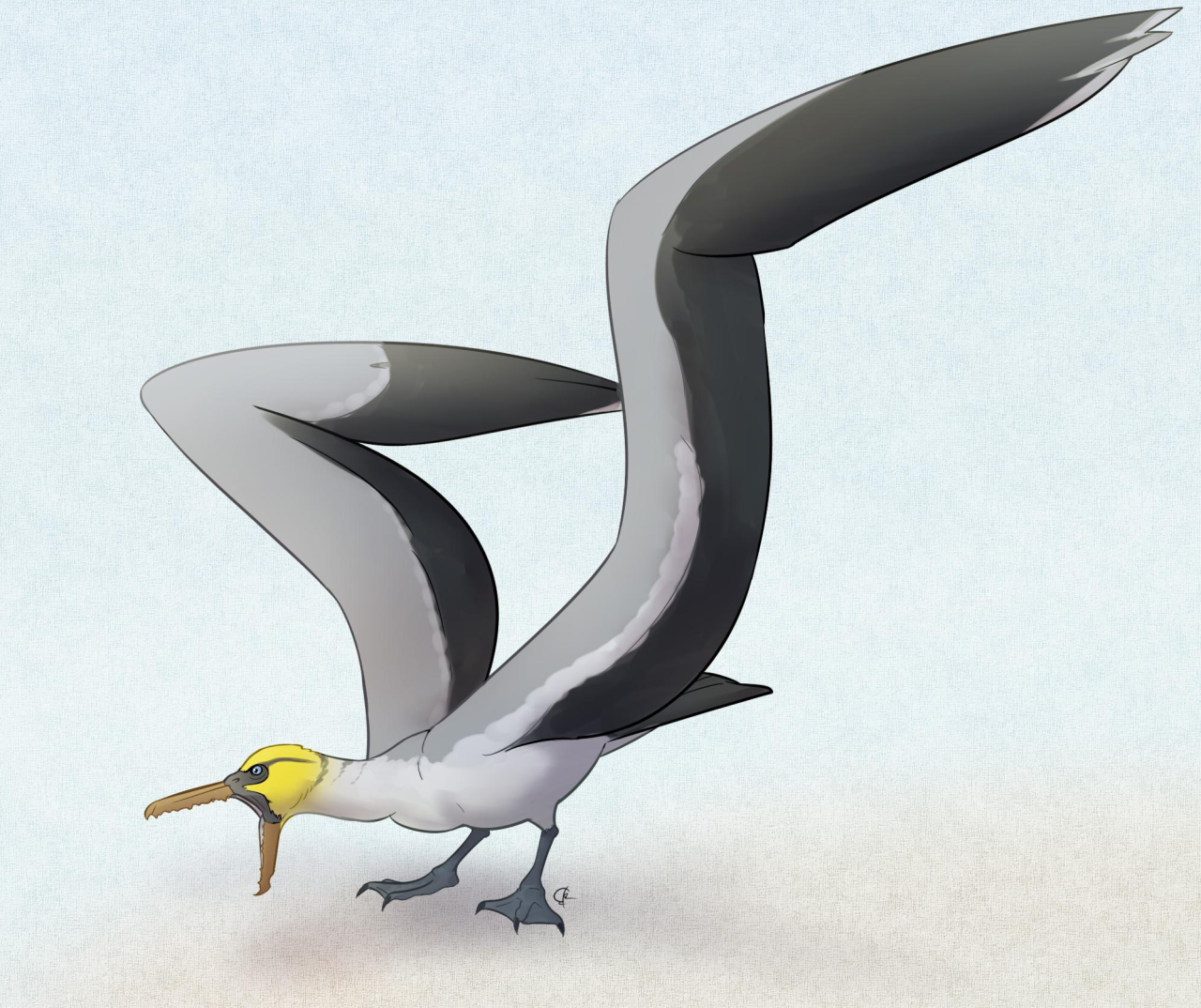
By José Carlos Cortés
Pelagornis was fucking huge, m’kay. P. sandersi has an estimated wingspan between 6.1 and 7.4 meters! This makes Pelagornis the bird with the largest wingspan (but not the heaviest flying bird - that record belongs to Argentavis). Its wings were even more proportionally long and narrow than those of the largest flying birds alive today, the albatrosses. In comparison, its body was fairly small. There were, of course, some species of Pelagornis that were smaller than this, reaching only 4 meters long in terms of wingspan. Still, this large wingspan size is really only characteristic of these birds in flight - compressed, they would have looked much smaller, especially given that they were very light weight. They had stout legs and shorter tails, which indicates that they weren’t very good walkers, and spent most of their time in the air or sitting on the land.

By Jack Wood
Diet: Probably fish. The pseudoteeth are likely an adaptation to grab and hold onto large fish. Similar toothlike serrations are seen, albeit much less exaggerated, in modern mergansers, which also eat fish. In addition, the vertical position of the head would have allowed Pelagornis to skim-feed, grabbing fish and other aquatic organisms from the top layer of the ocean and scooping them into their mouths. Thus, the fake-teeth would have allowed Pelagornis to grab onto fish better than non-toothed skim feeding birds. It may have also used these sharp fake teeth in order to grab onto the slipperiest fish and cephalopods - rather than harder shelly animals.
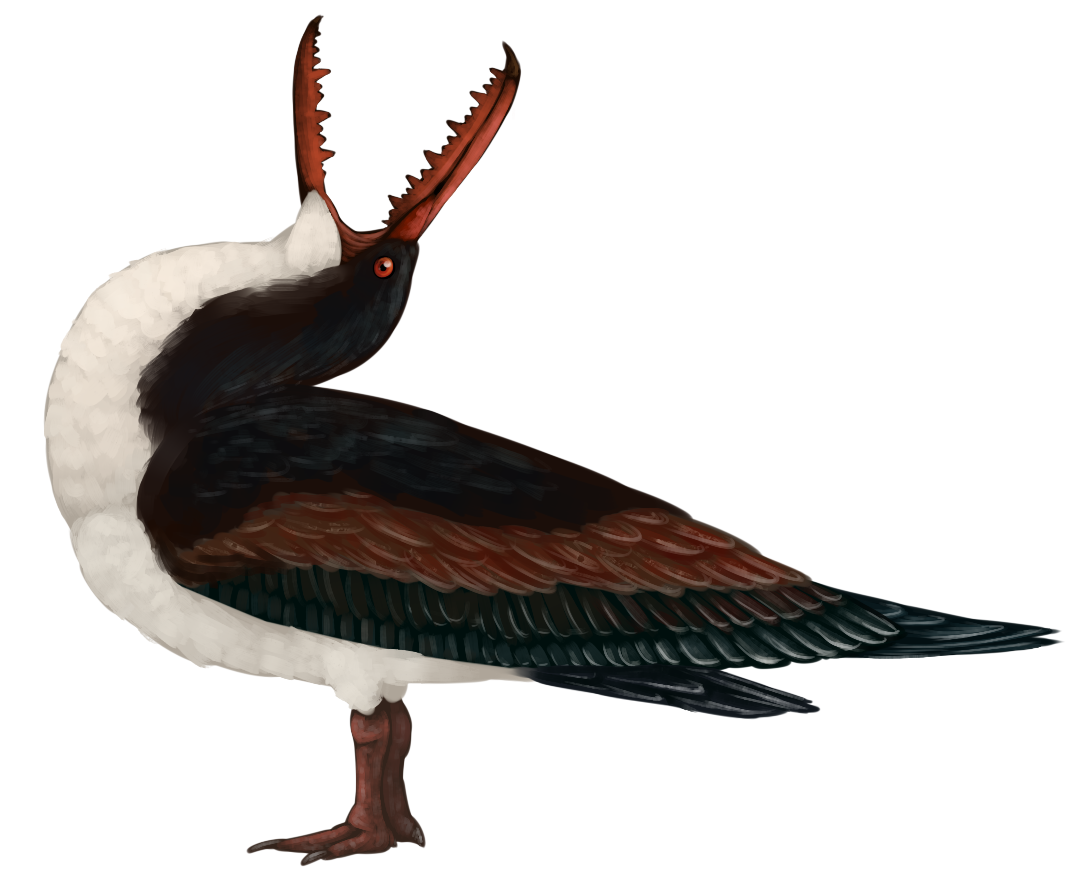
By Scott Reid
Behavior: As with modern seabirds, Pelagornis likely spent most of its time out at sea. Gliding on oceanic thermals would have helped to support its huge body in the air without wasting energy just to stay aloft - which was important, since it wasn’t very good at flapping its wings and would have had trouble staying aloft long enough to get food if it had to flap too frequently. Think an albatross, but a giant, evil albatross. Landing and taking off would have been more awkward, though. It probably needed to take advantage of headwinds, drops in elevation and/or air gusts to get into the air at all. Albatrosses also kinda have this problem, but nowhere near to the same extent. The late appearance of the pseudoteeth implies that Pelagornis may have fed its young back on land like many modern seabirds before they could feed themselves out at sea. As such, they would have sought out good nesting sites, which may correspond to where fossils of Pelagornis are found - indicating that their spread around the world was greater than that we know of. Since it was a sea bird, it probably would have been very social, living in large colonies - and it would have cared for its young in similar social groups. In fact, it seems more likely than not that it would have laid its nests on cliffs and in rocky areas and plateaus, where being able to take off would have been easier than flatter, sandier beaches. Whether or not these animals were as noisy as modern seabirds is really another question altogether.
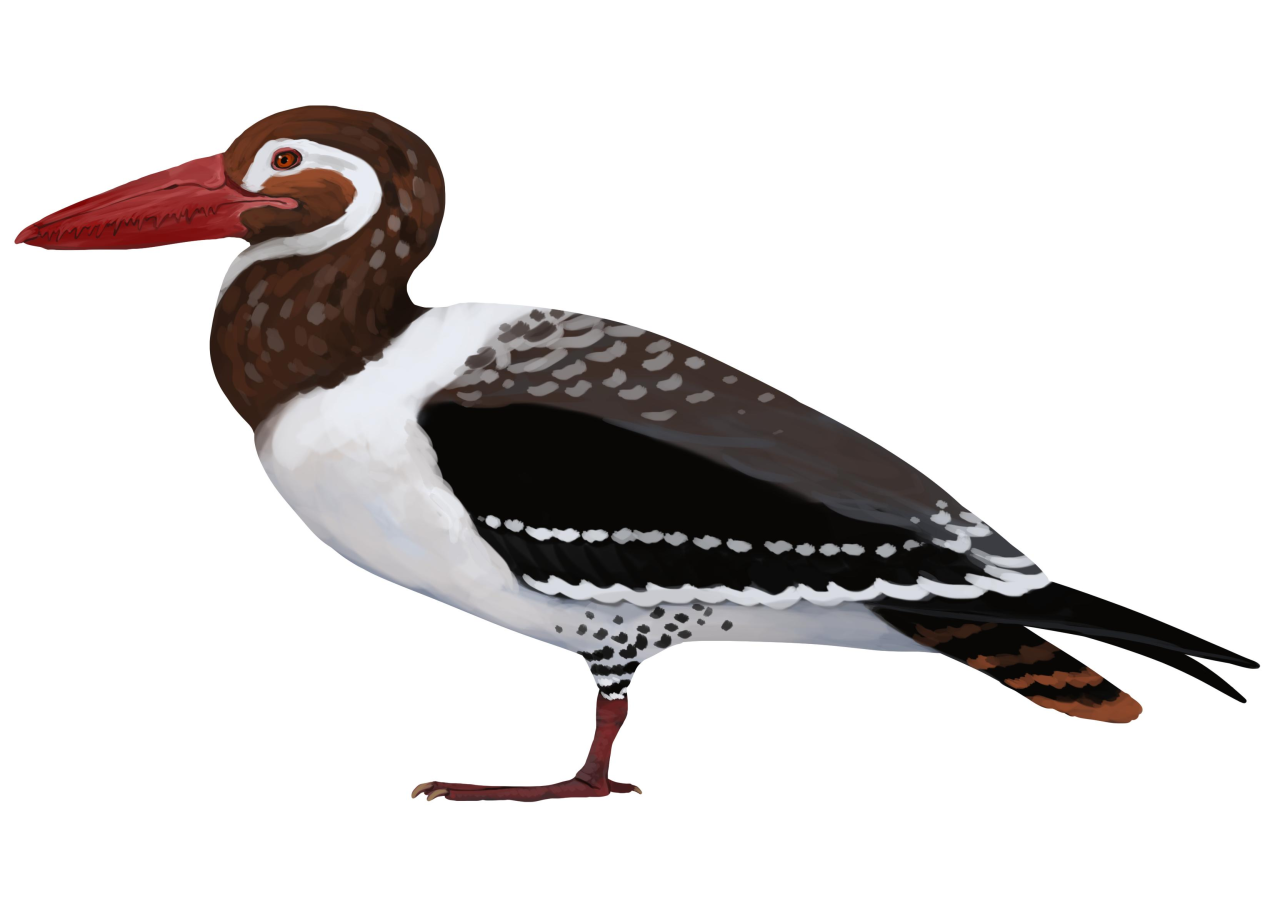
By Jack Wood
Interestingly enough, Pelagornis had a salt gland in the eye that would have allowed it to excrete excess salt, which was an extremely helpful trait when Pelagornis ate almost entirely seafood. That seafood diet didn’t meant it wasn’t a danger, however - today, seabirds will venture away from the coasts in order to scavenge food on the beach, and they are certainly defensive of their nests, young, and territory. Also fascinatingly, it had a very very very long skull - with all of those pseudoteeth packed in - which had similar shapes and organization as to the extinct really toothed birds of the Mesozoic. This implies that there was a certain amount of evolutionary regression in Pelagornis, allowing it to better support its teeth and chomping ability than it would otherwise. There is also an interesting furrow in the skull, which allowed it to be better support the head and possibly to better grab prey in the ocean.

By Scott Reid
Ecosystem: Pelagornis lived around coastlines worldwide. Because of this, it is difficult to pinpoint with certainty the types of animals it lived with. In fact, it was so long-lived and widespread it is more likely than not that Pelgaornis interacted with any ocean-going creature or animal found along the coast. It doesn’t seem to have a preference in the fossil record between rocky coasts or beaches, though it did seem to stay in at least somewhat warmer ecosystems and where cliffs would have been present for easier take-offs (and it is reasonable to suppose that cliff areas would have been its preferred place for nesting). Some notable animals it would have interacted with include extinct penguins, cetaceans, the famed giant shark Megalodon and… humans. Yup, Pelagornis is known from locations where early members of genus Homo ventured to. So, if you can imagine being afraid of a giant bird with fake teeth a little too well, that would be the instincts of your ancestors talking.
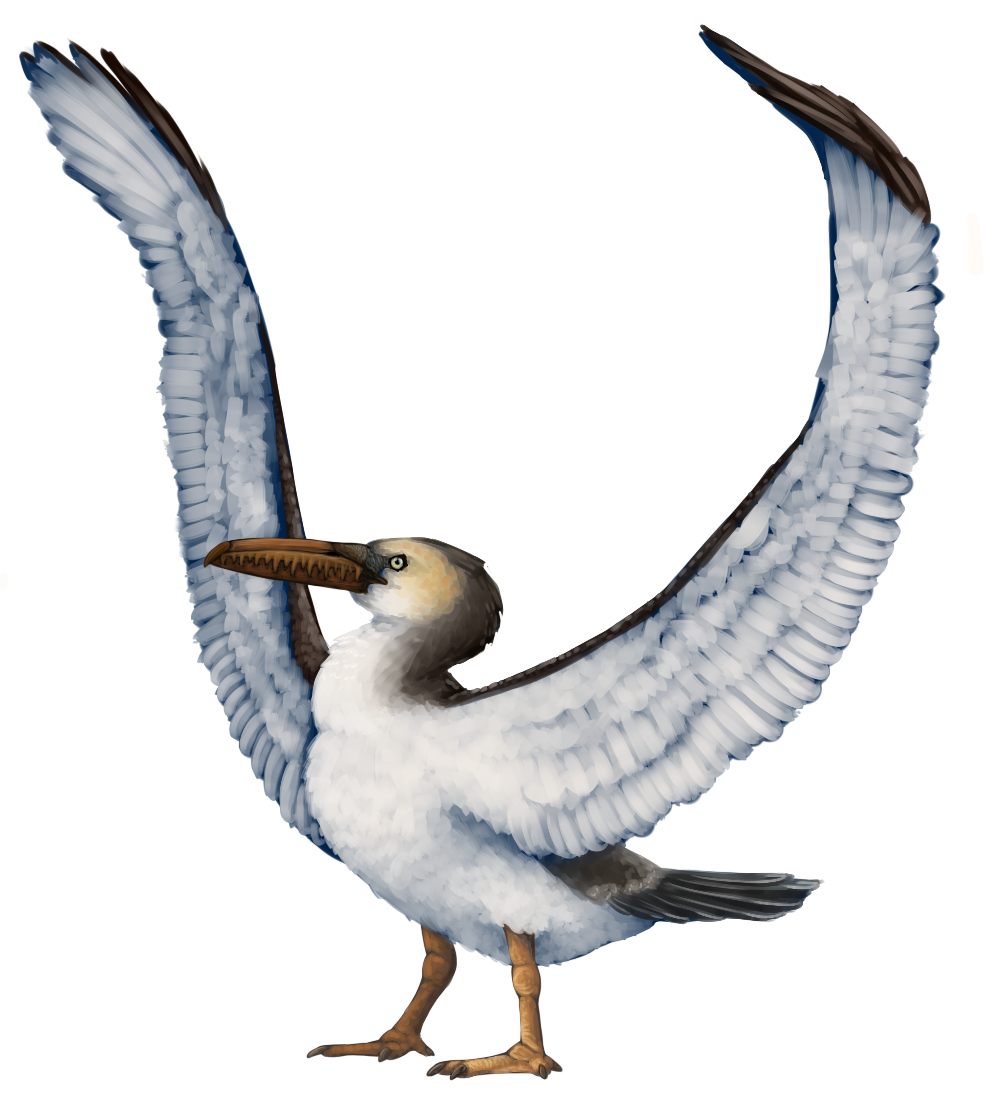
By Scott Reid
Other: Pelagornis is a fun time, classification wise, for multiple reasons: one, a whole bunch of different types of Pseudotoothed birds are actually, apparently, species of Pelagornis; and two, we don’t really know what Pseudotoothed birds really are. So, let’s break this down into those two parts. What’s going on with the species? Well, in the 2010s, a lot of research has been made that shows a bunch of the Neogene Pseudotoothed birds that we’ve counted as different genera are actually… just… part of Pelagornis. Why Wikipedia has not chosen to update their information as to this effect is beyond me, but the fact remains is that a lot of Pseudotoothed birds are just different shades of Pelagornis, primarily due to the fact that they really… aren’t different. In fact, a lot of the differences were just based on time and place, and the fact that Pseudotoothed birds weren’t really well known at all. The loss of Osteodontornis is a bit of a bummer, but there aren’t any major differences between this genus and Pelagornis, so it’s gone. We’ve also lost Pseudodontornis, you know, the name that actually means “fake toothed bird”, unlike the crappy name for Pelagornis, which just means Sea Bird. Like, come on people. Why are we here. Just to suffer. We’ve also lost Palaeochenoides, Neodontornis, and Tympanonesiotes. Hence the extreme amount of art in this article - the last time I covered Pseudotoothed birds, these were separate. So we have an abundance of terrifying tooth art.
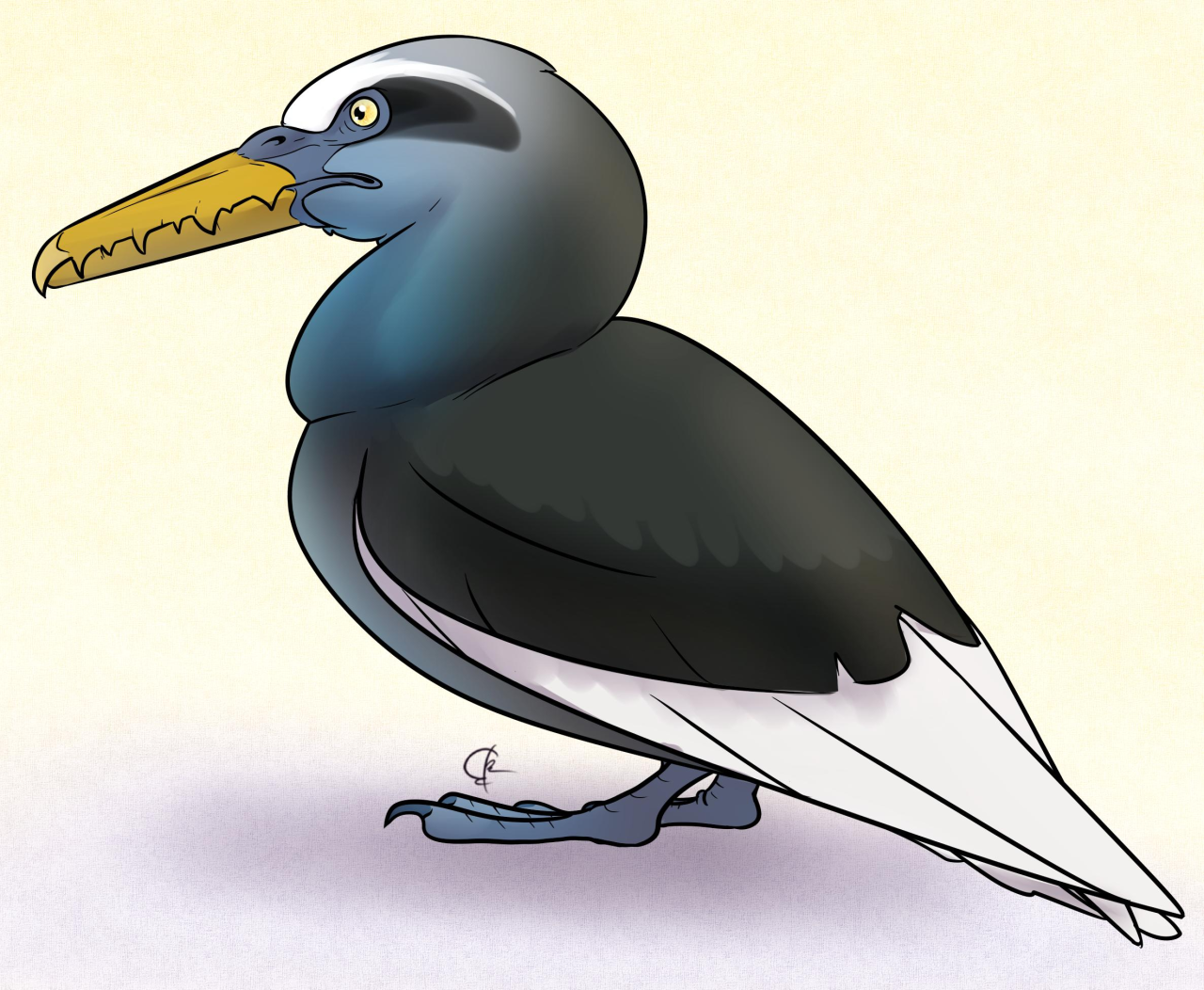
By José Carlos Cortés
Finally - what the heck are Pseudotoothed birds? We don’t know. We really don’t know where they go. Are they related to the sea birds we have today (the Aequorlitornithes)? Are they related to ducks? Are they something else entirely? We have no idea, because, frankly, they seem to just appear in the fossil record without any sort of origin whatsoever. Like magic. Suddenly, toothed birds were back like the asteroid never hit. Honestly if I were to hazard a guess, based on the fossil characteristics, they’re probably none of the above - but an early branching group of Neognathous (aka, all birds that aren’t ratites and their cousins) birds that evolved from a non-easily fossilized ancestor. Whether that ancestor had weak bones or just lived in places where fossils don’t happen is a different question entirely, but either way, so far we have nothing. They just appear, in the Paleocene, out of nowhere. And, eventually, Pelagornis also disappeared.
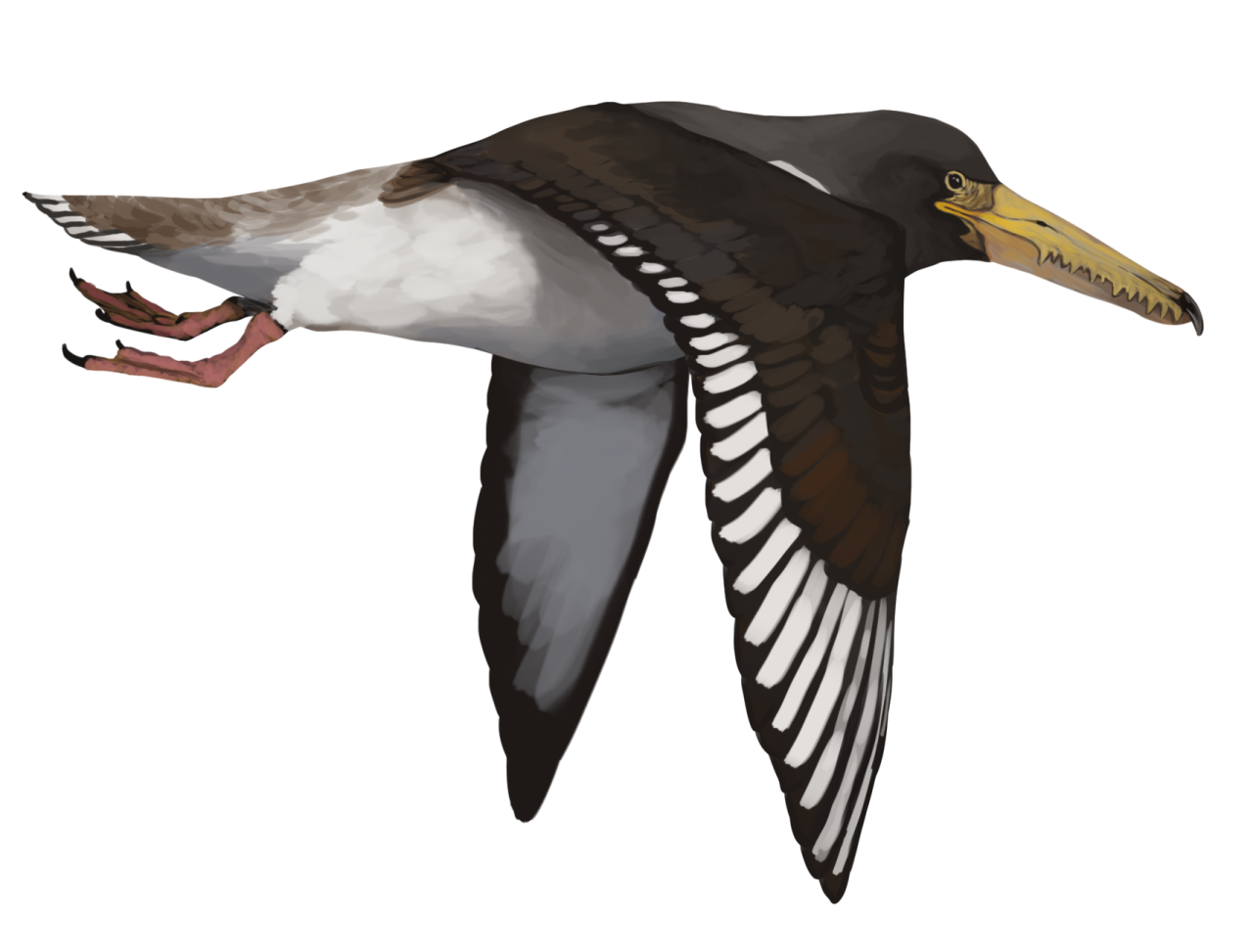
By Jack Wood
Why did Pelagornis, the latest surviving species disappear? The most likely answer is climate change. The onset of the ice age would have caused extreme changes to the water patterns, currents, and air flow. Since Pelagornis didn’t flap its wings much, and relied almost entirely on soaring and thermals, it probably would have been greatly affected by changes in these weather patterns. So, changes in the ocean and the air by the ice age would have decreased its ability to reach food, and then the dramatic changes in its home climate would have been a further death knell. Interestingly enough, they only began to become uncommon right before they became extinct - indicating that Pelagornis really was finished off by this change in climate. Which is sad, because that’s right around when humans were becoming more of a thing, and it would have been nice to see one of these things in life. Except it wouldn’t have been. Because they’re terrifying. But I laugh in the face of danger. I think. I dunno I just think they’re neat.

By Scott Reid
Species Differences: The different species of Pelagornis differ primarily due to location and time, though there are some differences in shape and size - those fossils that were once assigned to Tympanonesiotes, for example, were on average smaller than other members of this genus. The largest known species was decidedly Pelagornis sandersi, though the best known species is Pelagornis chilensis. For now, however, Pelagornis is kind of a mess, since so much research is needed on this species complex to make sure things are where they belong and one genus is enough, so species differences are difficult to parse out until more research has been published on the subject. Just know that there were a lot of Pelagornis - and they came in all kinds of different shapes and sizes all over the place.
~ By Meig Dickson and Henry Thomas
Sources Under the Cut
Becker, J.J. (1987): Neogene avian localities of North America. Smithsonian Research Monographs 1. Prentice Hall & IBD.
Bourdon, Estelle (2005): Osteological evidence for sister group relationship between pseudo-toothed birds (Aves: Odontopterygiformes) and waterfowls (Anseriformes). Naturwissenschaften 92(12): 586–591.
Brodkorb, Pierce (1963): Catalogue of fossil birds. Part 1 (Archaeopterygiformes through Ardeiformes). Bulletin of the Florida State Museum, Biological Sciences 7(4): 179–293.
Cenizo, M., C. Acosta Hospitaleche, and M. Reguero. 2016. Diversity of pseudo-toothed birds (Pelagornithidae) from the Eocene of Antarctica. Journal of Paleontology 89 (5): 870 - 881.
Hastings, A. K., and A. C. Dooley. 2017. Fossil-collecting from the middle Miocene Carmel Church Quarry marine ecosystem in Caroline County, Virginia. The Geological Society of America Field Guide 47:77-88
Hopson, James A. (1964): Pseudodontornis and other large marine birds from the Miocene of South Carolina. Postilla 83: 1–19.
Ksepka, D.T. 2014. Flight performance of the largest volant bird. PNAS 111: 10624-10629.
Louchart, A., Sire, J.-Y., Mourer-Chauvire, C., Geraads, d., viriot, L., de Buffrenil, V. 2013. Structure and Growth Pattern of Pseudoteeth in Pelagornis mauretanicus (Aves, Odontopterygiformes, Pelagornithidae). PLoS One 8(11): e80372.
Mayr, G. 2009. Paleogene Fossil Birds. Springer-Verlag Berlin Heidelberg.
Mayr, G., D. Rubilar-Rogers. 2010. Osteology of a new giant bony-toothed bird from the Miocene of Chile, with a revision of the taxonomy of Neogene Pelagornithidae. Journal of Vertebrate Paleontology 30 (5): 1313-1330.
Mayr, G., J. L. Goedert, S. A. McLeod. 2013. Partial Skeleton of a Bony-Toothed Bird from the Late Oligocene/Early Miocene of Oregon (USA) and the Systematics of Neogene Pelagornithidae. Journal of Paleontology 87 (5): 922 - 929.
Mayr, G. 2017. Avian Evolution: The Fossil Record of Birds and its Paleobiological Significance. Topics in Paleobiology, Wiley Blackwell. West Sussex.
McKee, Joseph W.A. (1985). “A pseudodontorn (Pelecaniformes: Pelagornithidae) from the middle Pliocene of Hawera, Taranaki, New Zealand”. New Zealand Journal of Zoology. 12 (2): 181–184.
Mlíkovský, Jirí (2002): Cenozoic Birds of the World, Part 1: Europe. Ninox Press, Prague.
Olson, Storrs L. (1985): The Fossil Record of Birds. In: Farner, D.S.; King, J.R. & Parkes, Kenneth C. (eds.): Avian Biology 8: 79-252.
Ono, Keiichi (1989). “A Bony-Toothed Bird from the Middle Miocene, Chichibu Basin, Japan”. Bulletin of the National Science Museum Series C: Geology & Paleontology. 15 (1): 33–38.
Rincón R., Ascanio D. & Stucchi, Marcelo (2003). “Primer registro de la familia Pelagornithidae (Aves: Pelecaniformes) para Venezuela [First record of Pelagornithidae family from Venezuela]” (PDF). Boletín de la Sociedad Venezolana de Espeleología (in Spanish and English). 37: 27–30.
Scarlett, R.J. (1972): Bone of a presumed odontopterygian bird from the Miocene of New Zealand. New Zealand Journal of Geology and Geophysics 15(2): 269-274.
Zouhri, S., P. Gingerich, S. Adnet, E. Bourdon, S. Jouve, B. Khalloufi, A. Amane, N. Elboudali, J.-C. Rage, F. Lapparent De Broin, A. Kaoukaya and S. Sebti. 2018. Middle Eocene vertebrates from the sabkha of Gueran, Atlantic coastal basin, Saharan Morocco, and their peri-African correlations. Comptes Rendus Geoscience 350(6):310-318
























